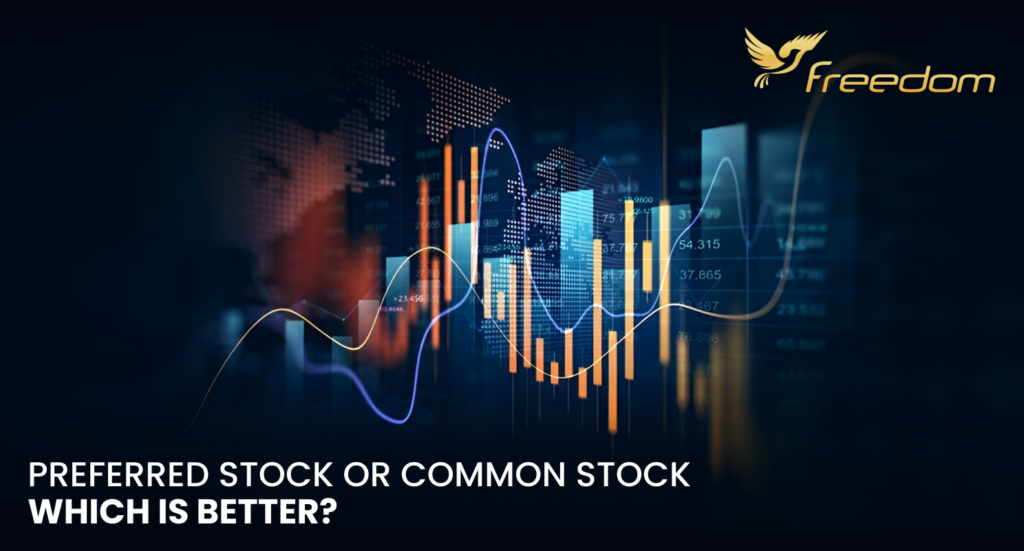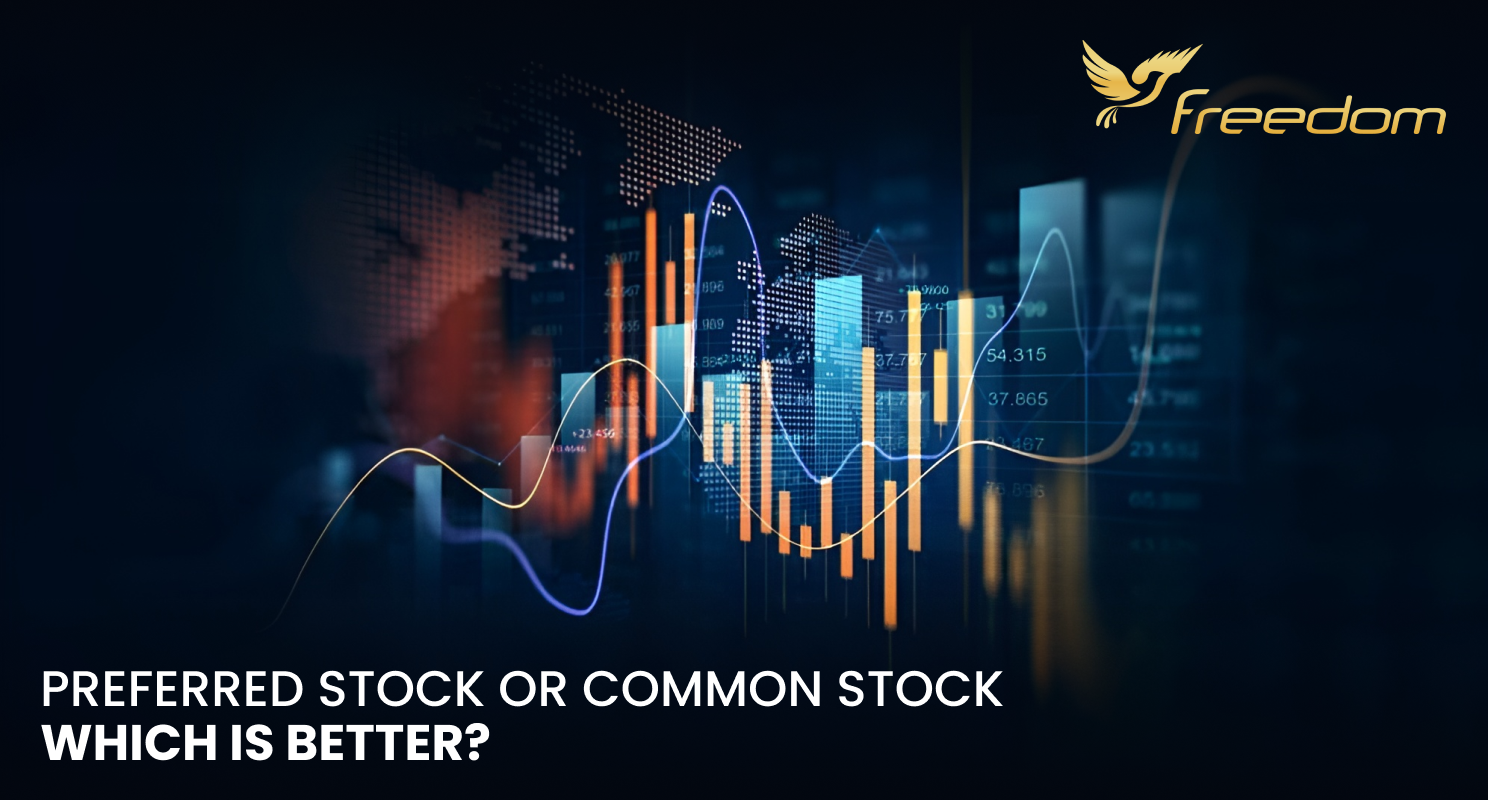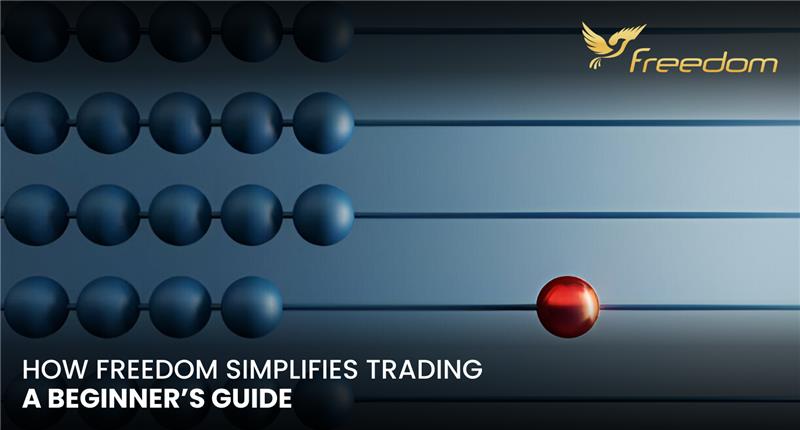A common stock is a ticket to ownership in a corporation, not merely a piece of paper (or, these days, a digital entry). Having common stock allows you to vote for the board of directors and corporate policy, giving you a say in how the company is run.
This kind of stock has the potential to yield profitable returns over time. There is a catch, though: common investors will only be compensated after bondholders, preferred shareholders, and other creditors have received their portion if the company must liquidate its assets. A company’s balance sheet’s stockholder’s equity part contains information about the value of issued common stock.
Common Stock Explained
Common stock essentially functions as a claim to a portion of the assets and profits of a corporation, serving as a kind of ownership. Being a shareholder entitles you to “part-ownership,” but this does not grant you ownership of the company’s tangible assets, such as computers or chairs, which are owned by the corporation, a separate legal entity. Rather, you have a residual claim to the company’s assets and earnings as a shareholder, which means you can keep what’s left over after all other responsibilities are fulfilled.
It is traded on exchanges and is available for purchase and sale by traders or investors. Common stockholders are entitled to dividends upon declaration by the board of directors of the corporation. Normally, the board decides how to divide them, considering many aspects such as the company’s performance, future capital needs, and overall financial objectives. They are typically paid from the company’s earnings.

What is a Preferred Stock?
In contrast to common stock, preferred stock is a unique form of stock with separate rights. Preferred stockholders have a greater claim to the company’s assets and profits than common stockholders, even though both forms grant ownership in the business. The term “preferred” stock reflects this higher rank.
Preferred Stock vs. Common Stock
Investors can acquire stock in a company through both common and preferred shares, but there are important distinctions between the two that they should be aware of.
Dividends
A firm may pay dividends to both regular and preferred owners. Preferred stock dividends, on the other hand, are predetermined and determined by the stock’s dividend rate and par value, or face value, of the share. Companies are free to decide whether and how much to distribute dividends to their common investors.
Preferred stockholders get paid before common stockholders if a corporation is unable to pay all its investors their dividends. Any missed dividend payments build up as “dividends in arrears” for cumulative preferred stockholders, and they must be made before dividends are distributed to common stockholders.
Bankruptcy of Corporations
When a firm files for bankruptcy, its favored stockholders, bondholders, and creditors are paid out before regular stockholders receive their portion of the assets. For this reason, preferred shares or debt are less risky than its counterpart.
Common shares have the advantage of often outperforming bonds and preference shares over the long term. Most businesses issue all three kinds of securities. As an illustration, Wells Fargo & Company offers several bonds on the secondary market, including common stock (WFC) and preferred stock, such as its Series L (WFC-L).
Voting Rights
A company’s shareholders are entitled to vote on significant management-related decisions. For instance, the members of the board of directors are chosen by the shareholders. Voting rights are typically granted to shareholders of common shares, while they are frequently not granted of preferred shares.
Trading and Variations in Price
On the open market, both common and preferred stocks are traded. Investors have the option to buy or sell any kind of share. Nonetheless, common ones are typically traded by investors as opposed to preferred equities. Preferred equities often offer lower price volatility and higher growth potential than common shares because of their fixed dividends and reduced risk profile. Preferred stocks have reduced volatility and steady dividends, which makes them popular among institutional investors looking for a steady stream of income. Additionally, these companies are often traded less frequently than common shares, which makes them less appealing to retail investors seeking to make quick gains.
First Public Offerings
A corporation must launch an initial public offering (IPO) to issue stock. An IPO is a significant means by which a business looking for extra funding might grow. A company works with an underwriting investment bank to decide on the kind and price of the stock before starting the IPO process. The stock is made available for public purchase on the secondary market following the completion of the initial public offering (IPO).
Benefits and Drawbacks of Common Stock
| BENEFITS | DRAWBACKS |
| Traded more frequently than preferred stock | Not likely to get dividends |
| Greater possible returns | Relatively low priority for dividend payments or in case of bankruptcy |
| Voting rights | Increased volatility in prices |
Benefits and Drawbacks of Preferred Stock
| BENEFITS | DRAWBACKS |
| Greater priority for dividend payments | Decreased potential profits |
| Fixed dividends with no reduction in value | Not eligible to vote |
| Reduced fluctuations in prices | Fewer trades made |
Which is a Better Investment?
Pros and drawbacks apply to each category. Common stocks often have more volatility along with higher potential gains. Although preferred stocks offer a smaller potential for return, they may be less volatile. This implies that preferred stock will be chosen by long-term investors who can tolerate more volatility, while common stock would be preferred by those who wish to minimize such swings.
Final Words
Common stocks, as the name suggests. It grants shareholders a claim to a portion of the company’s assets and future earnings in addition to an interest in the underlying business and voting rights for the election of a board of directors. On the other hand, preferred stockholders receive preference in terms of dividend payments and investment recovery in the event of a corporate liquidation, placing common stockholders in a subordinate position.




